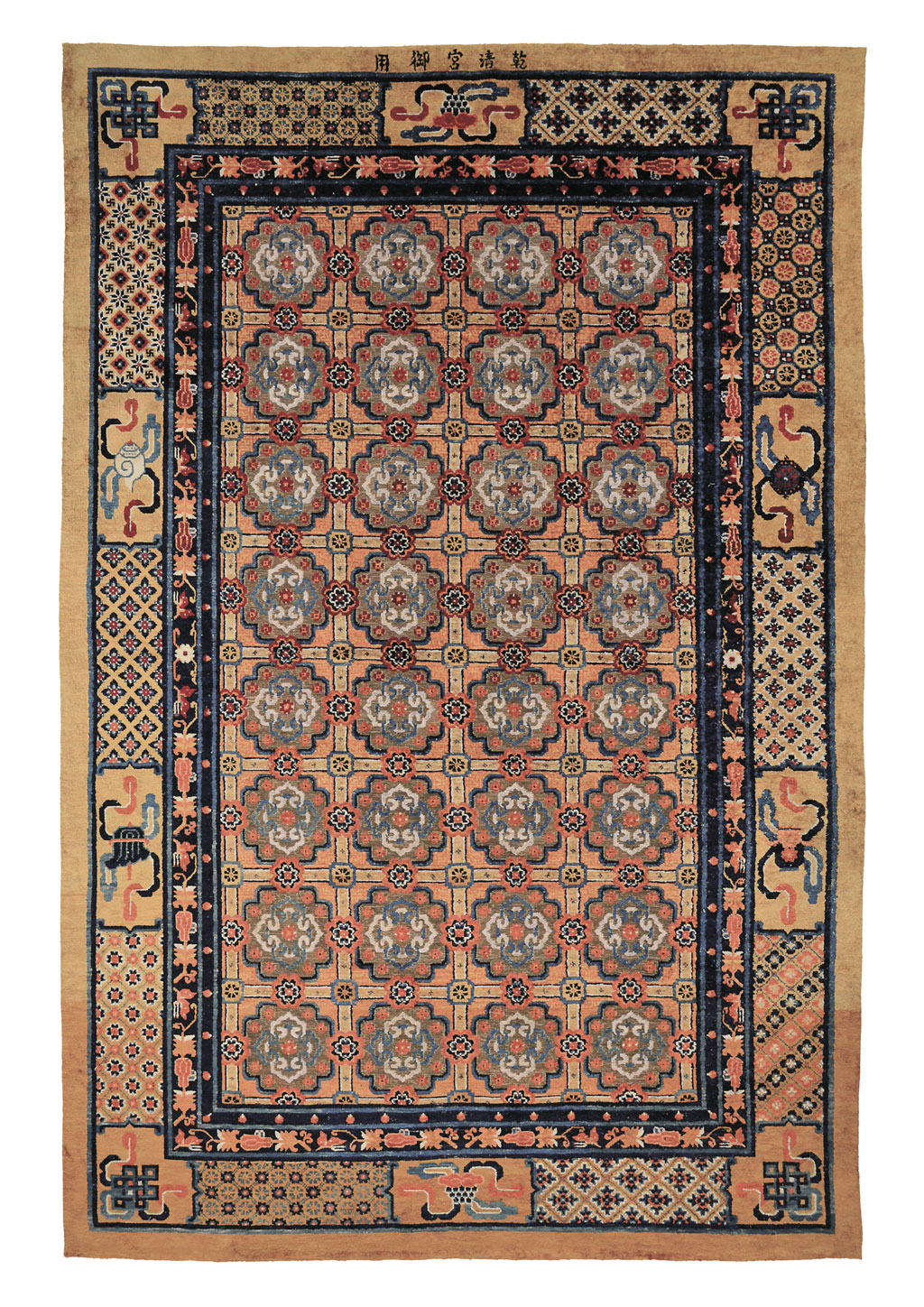OM MANI PADME HUM
Imperial Workshops of Beijing
China
Qing dynasty (1644-1911)
Daoguang period (1820-1850)
188 x 284 cm
Asymmetrical knot
Silk pile, gilded copper threads
Cotton warp and weft
Excellent condition
The inscription reads:
Qianqinggong Yuyong
For Imperial use in the Palace of Heavenly Purity
Exhibited:
Sep 1, 2010 – Mar 31, 2011 – Danon Gallery, New York
THE SECRET OF THE GOLDEN FLOWER
Carpets from the Qianlong Palace
Provenance:
Collection of Mrs. Francesca Antonacci, Roma
IMPERIAL CARPETS – THE MEANING OF FLOWERS
The dominant image present in the carpet is that of the flower, symbolic of the very essence of nature. In the Chinese language, the word flower, hua “花”, is formed by the character “化”, which indicates the transformations occurring in the plant world.
Emerging from the mud, lotus flowers were a highly regarded symbol of Buddhist purity and enlightenment. Almost all the superior divinities of Buddhism are shown in the standing position or seated upon flowering lotuses.
Bodhisattvas’ feet are held up by a lotus in memory of the legend that flowers bloomed at every step taken by Buddha; enlightenment is thus associated with a carpet of flowers. A carpet bearing the lotus flower motif becomes in itself a transcendent vehicle between earth and heaven.







